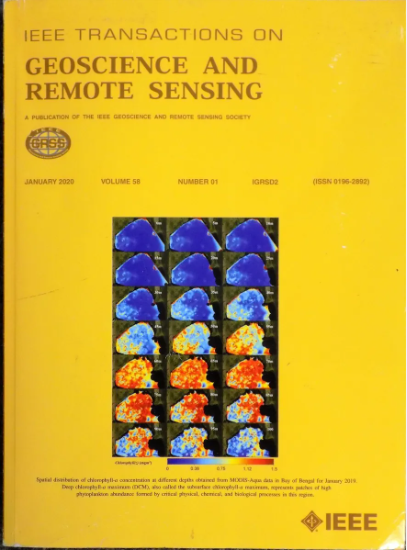基于多空间稀疏度优化的重磁数据提取
IF 7.5
1区 地球科学
Q1 ENGINEERING, ELECTRICAL & ELECTRONIC
IEEE Transactions on Geoscience and Remote Sensing
Pub Date : 2025-04-15
DOI:10.1109/TGRS.2025.3560979
引用次数: 0
摘要
重磁异常蕴藏着丰富的地质信息。然而,冗余信息使勘探目标的研究复杂化。现有方法主要依靠利用浅源和深源之间的光谱差异来分离不同深度的异常。然而,光谱重叠限制了这些常规方法分离由明显不同深度源引起的异常。为了减少光谱重叠的影响,我们提出了一种新的势场分离方法。该方法利用重磁数据在奇异谱和模型空间中的稀疏性,采用单层等效源表示目标源引起的异常。不同深度震源引起的异常可以分离。通过稀疏逼近单层等效源,得到了同一层内源引起的局部异常。综合模型实验表明,该方法具有较高的分离精度,尤其在小深度差模型引起的异常分离方面效果显著。此外,利用合成数据将低秩方法与现有势场分离方法的抗噪性进行比较,结果表明,低秩方法能够从被稀疏噪声和周期噪声污染的信号中提取有效信号。将该方法应用于南岭地区侵入岩引起的局部重力异常提取,有效识别了与各种侵入岩相关的重力异常。该方法有利于分离不同深度和相似深度源的重磁异常,从而扩大了分离技术的适用性,提高了重磁探测的分辨率。本文章由计算机程序翻译,如有差异,请以英文原文为准。
Gravity and Magnetic Data Extraction Based on Multispatial Sparsity Optimization
Gravity and magnetic anomalies contain abundant geological information. However, redundant information complicates the study of exploration targets. Existing methods primarily rely on exploiting spectral differences between shallow and deep sources to separate anomalies of different depths. Nevertheless, spectral overlap limits these conventional methods to separating anomalies caused by significantly different depth sources. To reduce effects due to spectral overlap, we propose a novel method for potential field separation. This method capitalizes on the sparsity of gravity and magnetic data in both singular spectrum and model spaces and employs a single-layer equivalent source to represent anomalies induced by target sources. The anomalies caused by sources with different depths can be separated. After sparsely approximating single-layer equivalent sources, we obtain the local anomalies caused by sources within the same layer. Synthetic model experiments demonstrate that the proposed method achieves high separation accuracy, particularly with respect to effectively separating anomalies induced by models with small depth differences. In addition, when comparing the noise resistance of low-rank methods with existing potential field separation methods using synthetic data, the results show that low-rank methods can extract effective signals from signals contaminated by sparse noise and periodic noise. We then apply this method to extract local gravity anomalies caused by intrusive rocks in the Nanling region and effectively identify gravity anomalies associated with various intrusive rocks. This method facilitates the separation of gravity and magnetic anomalies originating from sources at both different and similar depths, thereby expanding the applicability of separation techniques and enhancing the resolution of gravity and magnetic detection.
求助全文
通过发布文献求助,成功后即可免费获取论文全文。
去求助
来源期刊

IEEE Transactions on Geoscience and Remote Sensing
工程技术-地球化学与地球物理
CiteScore
11.50
自引率
28.00%
发文量
1912
审稿时长
4.0 months
期刊介绍:
IEEE Transactions on Geoscience and Remote Sensing (TGRS) is a monthly publication that focuses on the theory, concepts, and techniques of science and engineering as applied to sensing the land, oceans, atmosphere, and space; and the processing, interpretation, and dissemination of this information.
 求助内容:
求助内容: 应助结果提醒方式:
应助结果提醒方式:


